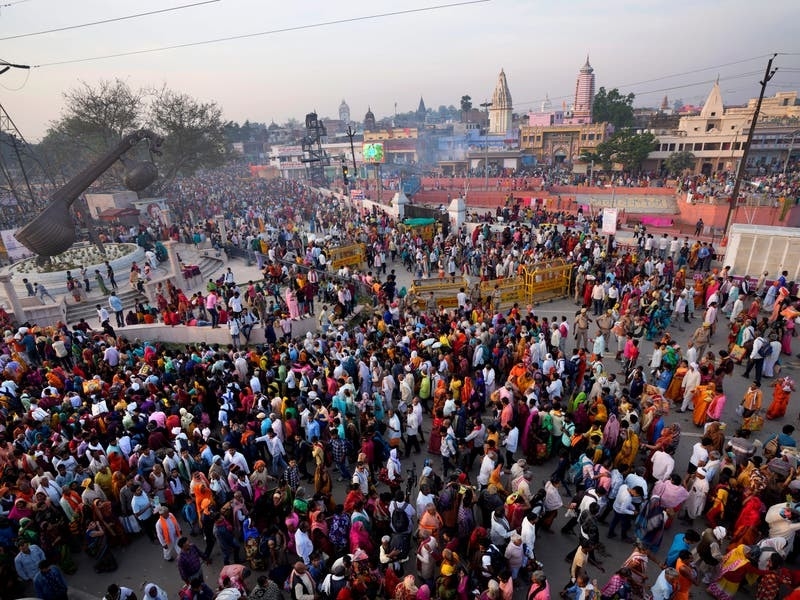India will be the world’s most populous country by the end of this month, eclipsing an ageing China, the United Nations said.
The milestone raises questions about whether India can repeat the economic success that has made China central to the world’s economy and a leading global power.
The news comes at a moment when India is promoting itself as a rising international player as the host of this year’s G20 summit.
It is also becoming a more attractive destination for multinational companies seeking to reduce their reliance on China.

The forecast is based on its latest estimates of global population.
It is not clear exactly when India’s population will pass China’s.
It may already have done so.
Demographers say the limits of population data make it impossible to calculate a date.
Another UN report last week projected that India would have 2.9 million people more than China by mid-year.
The Indian government, which has not done a census since 2011, has not officially commented on the estimates.
India and China are neighbours and have a complicated relationship, including robust trade ties and a long-running border dispute.

But their interests do not always align.
India, unlike much of the West, has refrained from condemning its Cold War ally Russia over its war in Ukraine, instead adopting a neutral stance even as India’s purchases of Russian crude have soared.
Observers say India’s sheer size, and its young population, give it the potential to replicate China’s economic trajectory.
Young workers who flooded into China’s cities to take factory jobs starting in the 1990s were an essential ingredient in the boom that saw China become the world’s second-largest economy.
But China’s population peaked in 2022 and has since started to fall.
By the close of the century, its population could drop below one billion, the UN said.
The country’s elderly population is swelling while its birth rate is still plunging, from 1.7 babies per woman in 2017 to 1.2 in 2022, according to UN data.
By contrast, India has the world’s largest young population, a higher fertility rate, and has seen a consistent decrease in infant mortality.
Historic reforms in the 1990s spurred spectacular growth and India’s three trillion dollar economy is the fifth largest in the world today as its high-skilled sectors have soared.
But India’s economy is still far behind China’s.
In 1970, the two countries had nearly equal per capita incomes, but today China’s gross domestic product is 12,556 dollars per person, compared with India’s 2,256 dollars, according to 2021 World Bank data.
Economists warn that even as India’s GDP has surged, so has joblessness.
About 80% of Indian workers still toil in informal jobs, which are often precarious, low paid, and offer little to no benefits.
The country’s vast population also means that many challenges play out on a huge scale, whether it is grappling with the growing threat of climate change, disparities between its urban and rural populations, a shrinking number of women in the workforce, or a widening religious divide.
“For this century to belong to India, it must make the most of its demographic advantage,” said Brahma Chellaney, a professor of strategic affairs at the Centre for Policy Research.
“China’s demographic crisis is timely for India’s growth – but only if it can find enough good quality employment for its teeming youth.”






